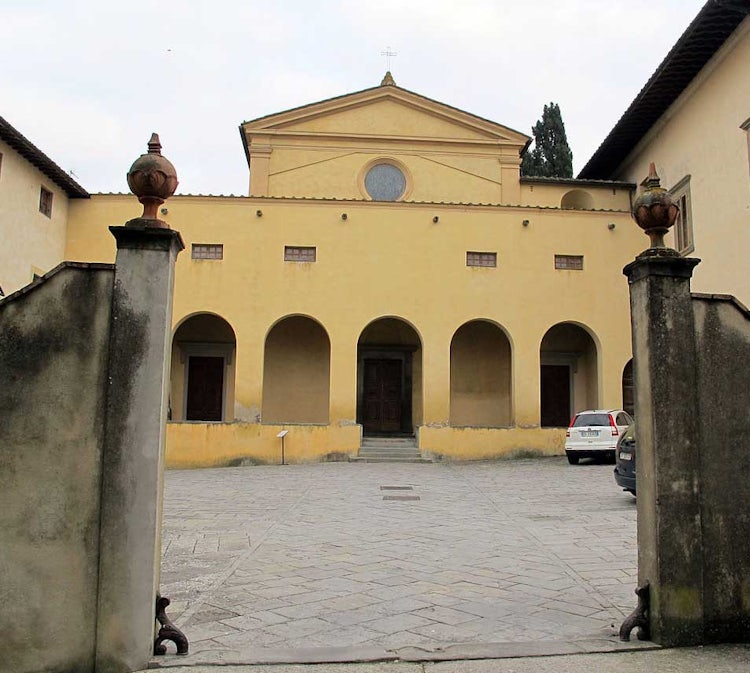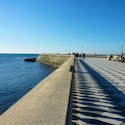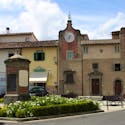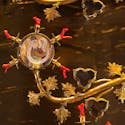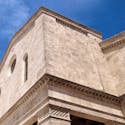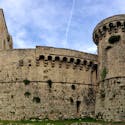Retracing the history of Tuscany
Boasting one of the few Medici villas open all year long, the town of Cerreto Guidi has many tempting reasons to invite the casual traveler to peek within its ancient walls and admire the lovely Tuscan landscape from above. Perched on a dominate hillside near the towns of San Miniato, Vinci and Empoli, this medieval borgo resides just northeast of the largest marshlands in Tuscany and only 40 km from the city of Florence .
Accessible by car, bike, hiking and public transport, this hamlet features mystery, murder, destroyed castles and a Medici villa. And along side all of that history, you will find traditional restaurants, festivals and little shops to visit. The central position between Florence, Pisa and Lucca make this small town and the surrounding area ideal for basing yourself while on a vacation in Tuscany.
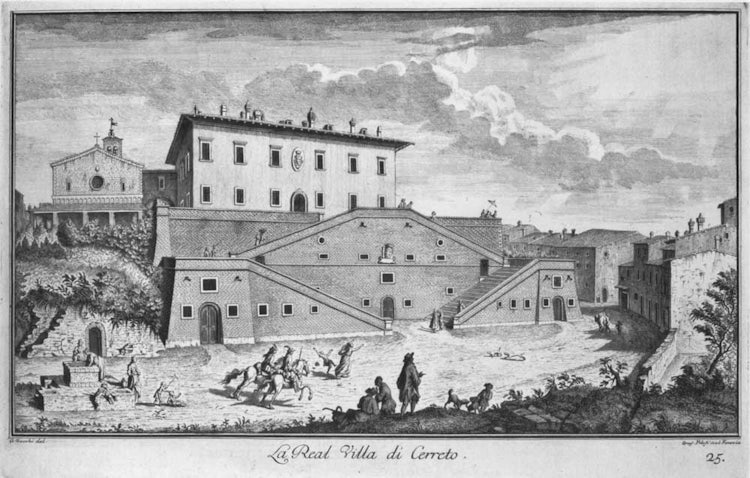
What is in a name?
The location of Cerreto Guidi is an essential part of its history; situated in a place naturally fortified thanks to its lofty position. This town is found on the point where the Arno valley widens towards the plains of Pisa, and close to the Via Francigena. The first documented testimony to its existence was around the 8th century AD, but it was under a different name, Cerreto in Greti, which derives from a latin word referring to the abundance of oak trees in the area.
The town was already quoted on a document of 780, according to which three noble brothers from Pisa donated a little church, in town of Greti, to the Benedictines of San Savino near Calci.
The town was often referred to simply as “Greti", a reference to the ridges of the steep hill by the river, which served as a natural defence against the flooding waters of Arno River. The name of the small town underwent a change when the powerful Guidi family settled within its walls; their presence in this area is documented since 1086. Not too long after the settled in, the Conti Guidi, medieval feudal lords from Casentino, substituted out the word Greti — probably just because they could !

Building on its strengths
If the Guidi family gave the town its name, it was the Medici family that gave the town the form as we know it today. Cosimo I de Medici, Grand Duke of Tuscany, saw a future in the area for relax from his family's everyday stress, especially since this location featured some of his favorite activities: hunting and long walks in the countryside. The family was already established near the marshlands of Fucchecio and Stabbia, so it didn't take much for them to establish a hunting lodge - just the size of the villa gives you an idea, this was a very impressive Medici-villa-styled hunting lodge.
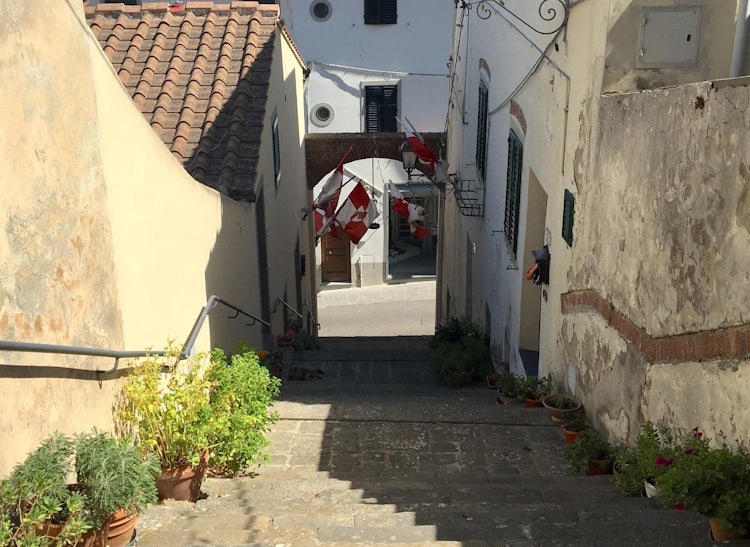
What to see in town:
Rocca of Cerreto Guidi also known as the Castle of the Guidi Family
You will need to use a little bit of imagination to visualise the “Rocca" or castle of the Counts Guidi. It was once positioned in the center of town, which is literally comprised of concentric rings. These winding streets are still visible but the castle, dating back to the fourteenth century, is no longer around. In fact, the castle, including several towers which comprised part of its defence system, were destroyed and dismantled, often providing the building material for several of the other Medici villas in Tuscany.
Actually at the time of Cosimo I (1500's) the castle must have already appeared as a ruin given that Count Guido Selvatico Guidi had sold the castle of Cerreto to Florence in 1273 to settle his debts and, since then, what had remained was abandoned.
However, as you stroll the town streets you can imagine the perimeter walls of the old castle of the Counts Guidi located on the top of the hill where today you will find the villa. It had been posiioned well, with the “greti" or the steep descent for protection. Today you will see this hillside covered in olive trees to reduce the risk of landslides - and of course, it also provides a rich crop of olive oil every November.
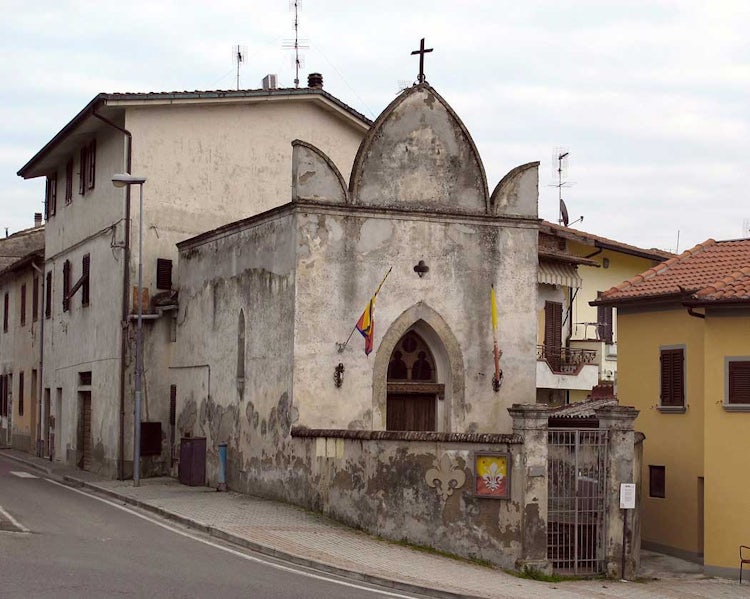
City Walls of Cerreto Guidi
You can also try to imagine the 14th century walls which would have protected the borgo, and the “four doors, (entrance ways into the city) each placed in the direction of the most important communications routes of the time":
- to the southeast the Porta Fiorentina which was destroyed in 1648, rather self explanatory - this door headed out towards Florence
- to the southwest the Porta a Vatignano destroyed before 1500
- to the north east the Porta Padulana destroyed in 1830, the word “padulana" refers to the nearby marshlands
- and, the only one still existing today, to the northwest the Porta a Palagio, named for its proximity to the Palazzo del Podestà.
Oratory of San Rocco
Though it was first “officially" recognised in 1575, it is believed that this oratory is actually dates as far back as the XIV or XV century. Many small towns would have built a small church in honour of Saint Rocco in this period which is marked for the deadly sickness: he is the patron saint of the plague. It houses a small historical museum in honour of the “contrade": Porta Fiorentina, one of the four districts of the town.
Pieve di San Leonardo
The parish church of San Leonardo and bell tower, which we know goes as far back as the 10th century and most probably even further, is attached to the Medicea villa. This little gem was completely restored by Grand Duke Cosimo I and it houses some beautiful pieces from the 16th century, including a noteworthy baptismal font in glazed terracotta by Giovanni della Robbia (1511) and, on the high altar, a beautiful wooden Crucifix by Giambologna.
The choir above the entrance, protected by a grating, is directly connected to the Medici villa: from here its guests could attend religious services undisturbed.
Oratory of the Holy Trinity
On the list of things to visit within the town walls is this oratory, with its simple rectangular floor plan and gabled façade. The small building was erected in 1587 by Giovan Battista Guidi, a doctor in philosophy and medicine, and a trusted companion of Francesco I de' Medici. A look inside will reveal an interesting panel of “counter-reformist taste", attributed to Passignano, representing the Communion of Santa Liberata, who just happens to be the patron saint of the city.
Oratory of San Jacopo
This complex most probably played host at one time to the many travellers on the via Francigena as it was originally located outside the city walls and was annexed to a small hospital dedicated to welcoming the poor and the wanderers. Though the hospital no longer exists, we know by the name of the area "Spedalino", which comes from ospedale or hospital, that it was a very important area.
Sanctuary of Santa Liberata
The Sanctuary of Santa Liberata, whose construction probably dates back to 1336, was built, according to tradition, in thanks for the liberation of the city from the troops of Mastino della Scala, who was a ferocious mercenary. The sanctuary was founded around a fresco dedicated to Santa Liberata, whose cult grew during the centuries. It is considered a strange phenomenon that Santa Liberata, a saint who never even lived in Tuscany - an area full of saints to choose from - became the patron saint of Cerreto. The building has been modified several times over the years, and in 1798 the church took on its present appearance.
MuMeLoc, a museum of memory
With the objective to promote and preserve local cultural heritage, this museum has an “eye fixed on the past, but the other is well aimed at the present and the future." The theme centers around one of the more dramatic events in local history: the Nazi-Fascist massacre of 23 August 1944. The museum houses a collection of voices, images, and information regarding the area, its traditions and stories.

Villa Medici
It is impossible not to visit this magnificent “hunting lodge" in the city center, especially since all roads seem to lead you to the town center and the magnificent villa from the late 1500's. Commissioned by Cosimo I, who built a rather simple hunting lodge around 1555, after the annexation of the town into the possessions of the Duchy of Tuscany, it was enlarged during the second half of the 16th century. Today it houses a museum on hunting, one of Cosimo's favorite past-times, as well as several paintings by quality artists. Read more about how to visit the villa and gardens: new link
Events
If you really want to make your visit to this town special, then try to coordinate with one of these fun activities:
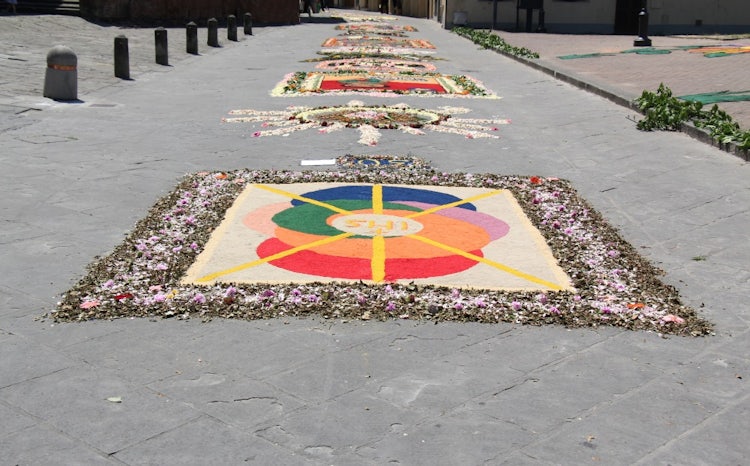
Infiorata of Corpus Domini | June 18
The streets will be decorated during Corpus Domini holidays with great show of color and fragrances. The “artists for a night" consist of beautiful images created by experienced artistic masters and their local helpers. They start creating their temporary masterpieces the evening of June 17th. The work continues all night, and on Sunday the streets of Cerreto Guidi will be covered by a striking floral carpet 450 meters long.
Notte d'Isabella | June 30 & July 1
A fun filled event that involves the entire town center. For two days the atmosphere of the town re-creates the arrival and mysterious death of Isabella de Medici, which took place in the villa within the town walls of Cerreto Guidi on July 16, 1576. Enjoy 2 days while the town dresses in the spirit of the late 1500's, you can relive the times with authentic performances of all kinds including food, music and authentic dress. Perhaps the famous Isabella de Medici may even join in the festivities, since she has been known to make a “ghostly" appearance in the villa and the city. Get details at the official website
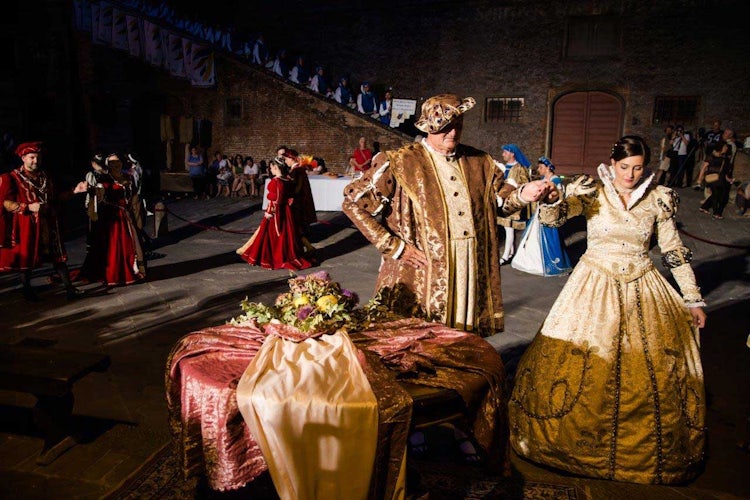
Medicea Food & Wine | mid July, dates vary
A gathering of all the best flavors of the area can be found in the city walls, great wines, special recipes and lots of activities to enjoy the great summer weather.
Palio del Cerro | the Saturday before the 1st Sunday in September
Since 1969, Cerreto Guidi has been the home to this event in which the four "Contrade" (neighborhoods) of the village compete against each other in traditional games and races (tug-of-war, archery, relay races and more) in honour of Santa Liberata, the patron saint of Cerreto. It's exciting to attend the parade in Renaissance-era costume, inspired by the times when Cosimo I ruled and his daughter Isabella died a tragic death.
What to see & do nearby:
After exploring the town of Cerreto Guidi you can fill your day outside of Florence by visiting one of these nearby sites and small towns. Each feature a different facet of Tuscany's personality, highlighting the natural thermal waters, the medieval towns, the delicious wines and the amazing landscape.
Montecatini
A fascinating little town, Montecatini combines the charm of an antique hamlet with the pleasures of thermal waters. Visit the town above with its medieval walls and winding “vias", restaurants and views over Tuscany. Then take time to soak in the thermal waters which have relaxed thousands of visitors long before the 1800's when this became a chic and much sought after vacation spot for celebrities and nobles alike.
Padule of Fucecchio
Comprising approximately 2,000 hectares, the marshlands of Fucecchio includes portions of the provinces of Florence, Prato, Pistoia, Lucca and Pisa. This vast wetland, which is the largest Italian swamp, has played a strategic role in the area and is now an intriguing place to visit for close up encounters with the amazing fauna and animal life it shelters. This is considered an exceptional place to do some bird watching and provides a fun and educational adventure for all ages. More information about activities can be found at their Facebook Page
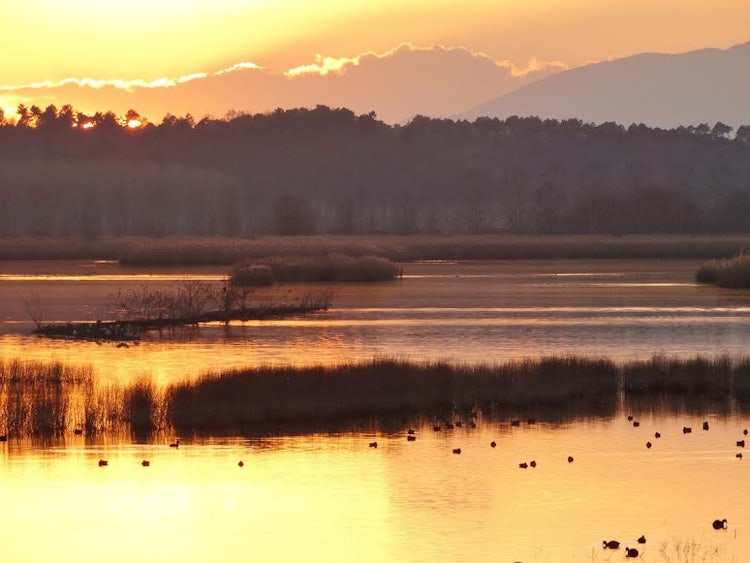
Strade del Vino e dell'olio del Montalbano
The wine route called "Strade del Vino e dell'olio del Montalbano" or sometimes, simply the Hills of Leonardo (da Vinci) will take you on an extraordinary journey through the vineyards and olive trees from Cerreto to Vinci to to Padule di Fucecchio, where you can taste many wines and oils made in the surrounding Florentine hills. This area produces Chianti Montalbano DOCG, Bianco della Valdinievole DOC, Vin Santo della Vadinievole, Bianco Empolese DOC, and other wines of Cerreto with a typical geographical indication. The olive oil produced here, famous for its organoleptic qualities and high nutritional value, is the extra virgin IGP Toscano "Montalbano". Follow upcoming events at their Facebook Page
Via Francigena
Beginning in Canterbury and stretching through what is known today as England, France, Switzerland, and Italy, the Via Francigena was a fundamental part of the network that religious travelers followed towards spiritual discovery. It was comprised of over 1800 km of undefined “roads" which the pilgrims traveled by foot...or if lucky, by horse and/or carriage. Cerreto Guidi benefited immensely from its position between Altopascio and San Miniato offering hospitality and care for the weary.
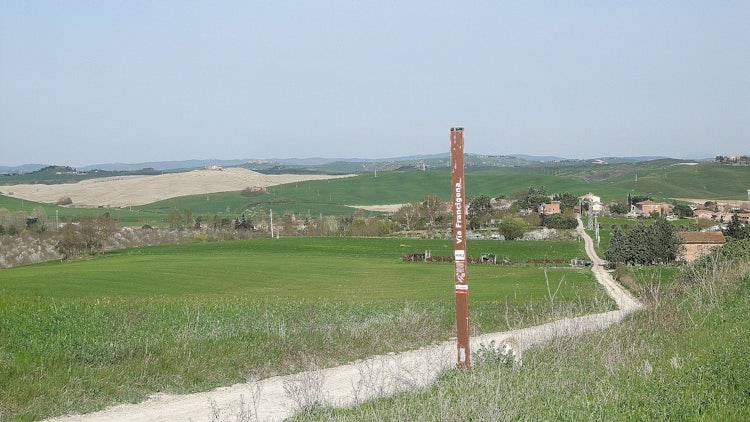
How to get there
If you arrive in Florence at the Amerigo Vespucci airport, you can grab a shuttle bus to Florence Santa Maria Novella train station. Once at the train station you can use the LAZZI bus service, changing at Empoli to another LAZZI or COPIT bus for Cerreto Guidi.
If you are arriving by car, we suggest that you take the Autostrada A1, and exit at Firenze-Signa, follow the direction for the superstrada Firenze-Pisa-Livorno (FI-PI-LI). Exit Empoli Ovest and then head towards the town of Vinci to Cerreto Guidi.
This small yet enchanting little town in Tuscany features many fun filled activities for families with children or travellers looking to discover the wonders of the countryside. From historical events, to monumental architecture to delicious wines and olive oil, a stop at Cerreto Guidi makes for a great day trip.
